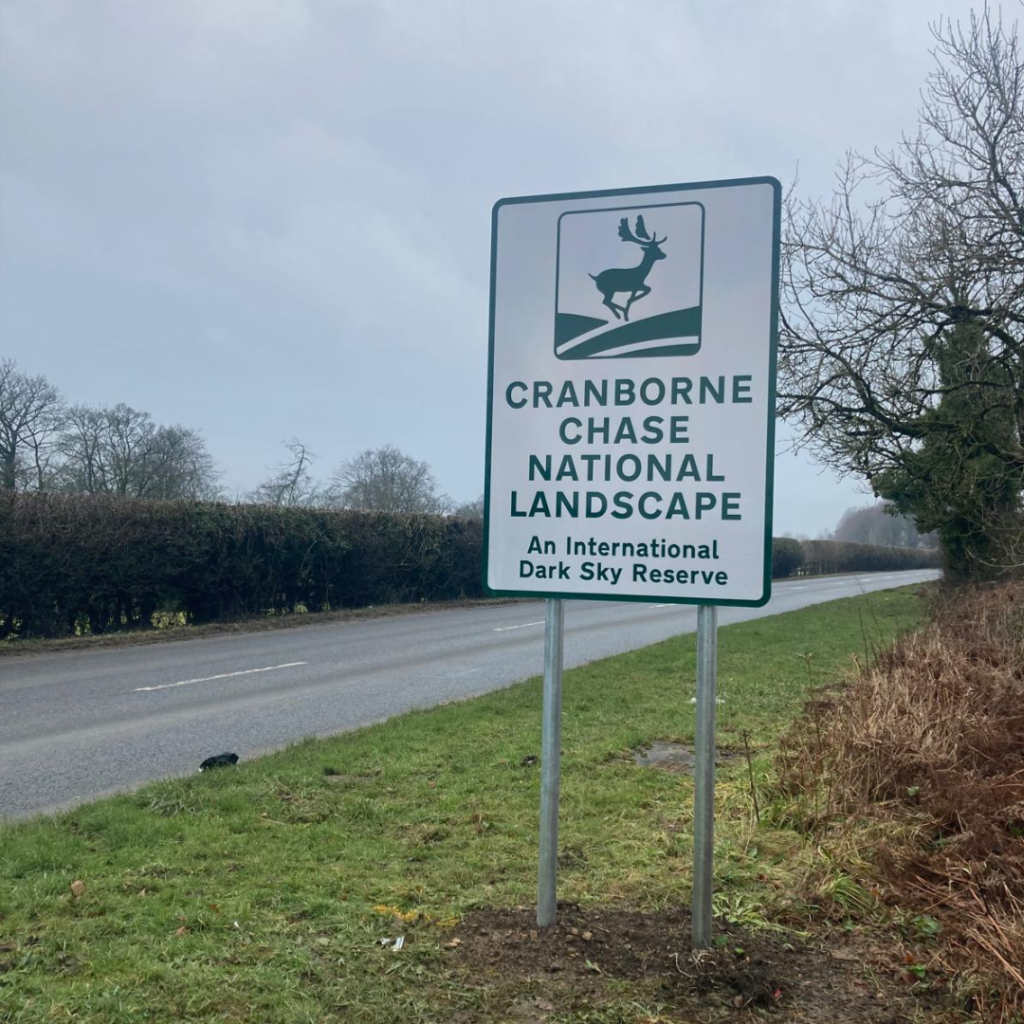Many of you will have noticed the recent appearance of road signs on major routes in Wiltshire, indicating that drivers are entering this nationally designated landscape.
The erection of these new signs has realised a long-held ambition of the National Landscape, to improve the ‘sense of place’ and the public’s understanding of this area and its boundaries.
There are 7 of these signs now erected on the side of ‘A’ roads in Wiltshire on the boundary points of the National Landscape; there are 3 on ‘B’ roads. These signs have been designed to help people to understand that they are entering a very special place – Cranborne Chase National Landscape.
The history of this area is quite unique, being the last royal hunting forest in the land to be disenfranchised, the effects of which can still be seen in the landscape today through some unusually wooded chalk downland. It is also the past home of General Pitt-Rivers, the acknowledged ‘father of modern archaeology’. The area claims stunning panoramic views with its wide open, expansive skies together with the more verdant, lush green landscapes of the Vale of Wardour. It has a huge, popular network of Rights of Way and is home to nationally rare habitats and wildlife, while exhibiting a very rural, agricultural way of life for many.
The design of the new signs, including the overall size, the text size and their locations were undertaken by Wiltshire Highways, whose responsibility it is for signage beside highways. Wiltshire Highways are bound by national rules as to the size and location of signs. Wiltshire Highways worked closely with the National Landscape team regarding the sign’s branding, text and their location where our boundary crosses roads.
Not only do the signs highlight the boundary of the National Landscape, but they include the ‘International Dark Sky Reserve’ (IDSR) designation, celebrating our prestigious and highly valued designation. Cranborne Chase is the only National Landscape to have earned this designation in its entirety in the country, and these signs are an opportunity for us to improve awareness of this designation more widely. This helps to promote and support our obligation as an IDSR to reduce light pollution annually, encouraging the community to support us in keeping light levels down.
The potential need for signage was highlighted when the National Landscape successfully applied for funding from the National Lottery Heritage Fund for the Chase & Chalke Landscape Partnership scheme in 2017/2018. We were asked to undertake research that identified and evidenced what people knew about the area – those that live here, those in the surrounding market towns and those from further afield. That research confirmed what we had suspected for a long time; that a great many, both inside and outside the area, knew very little about it; not even that it was designated ‘on behalf of the nation’ over forty years ago.
In 1981, the year of designation, this 981 square kilometres (380 sq mls) was singled out as being a very special area due to its natural, historic and cultural heritage. Everyone who lives, works and visits here, including all the many Local Authorities, organisations and agencies, should be aware of a responsibility to help ‘conserve and enhance’ the area. That is a very difficult message to get across when many remain unaware of the designation, or the reasons why the area is designated. We aim that, as has happened elsewhere in the country with National Parks and other National Landscapes, that such signage will make more people aware that Cranborne Chase National Landscape is a special area. With increased awareness, more people may start to learn about it, appreciate and value it and, hopefully, help to look after it and have pride in it. The Chase & Chalke project itself now has over 700 volunteers signed up to learn more about the area, and many regularly take part in activities, events, walks, training days and practical archaeological and nature conservation work. Many of those had no idea the area was designated before 2020 when the project began.
The National Landscape Partnership has considered signage more than once in the past, with the prohibitive cost of the signs being the key factor in not erecting them before. On this occasion, we were able to pursue the erection of the signs as our main funder, Defra, had granted all National Landscapes a small amount of capital funding to enable us to fund the project in Wiltshire. The Partnership would concur that a myriad of signs appearing perhaps at junctions or elsewhere is not to be encouraged and can be confusing or distracting for drivers. It is often the case that many of these signs are not actually given permission. However, the decision to erect National Landscape boundary signs was considered acceptable on the basis that Highways would control their design and locations and that the outcome of informing people that they are entering a nationally designated area, was a positive move.

